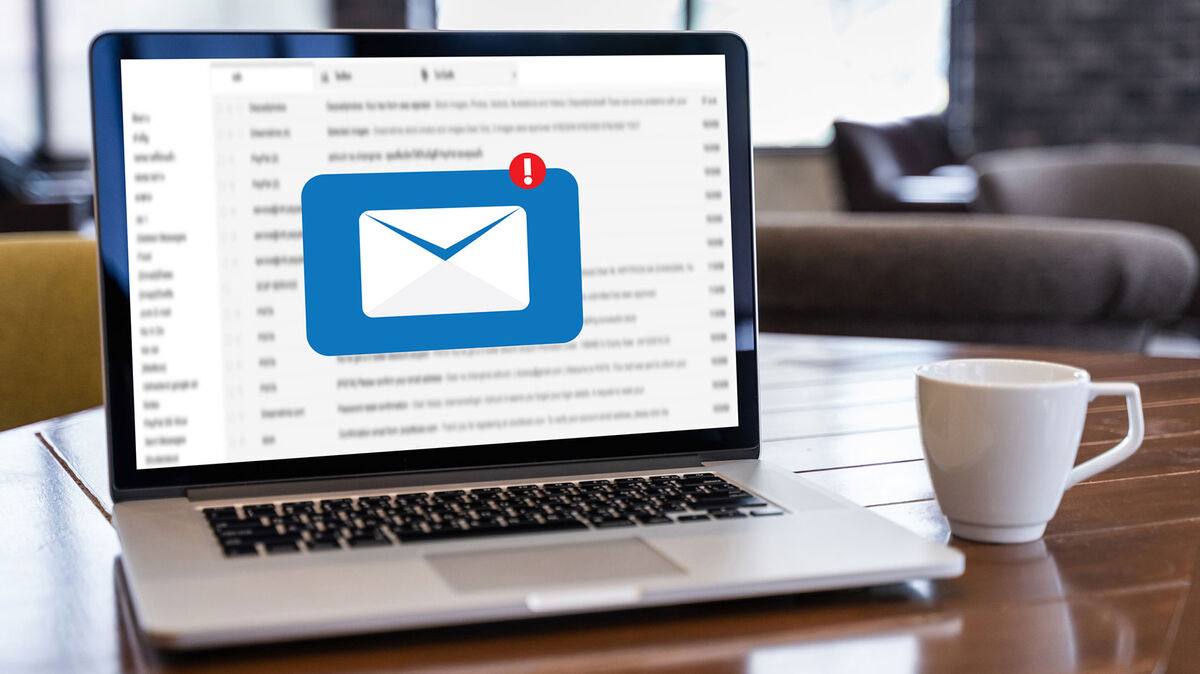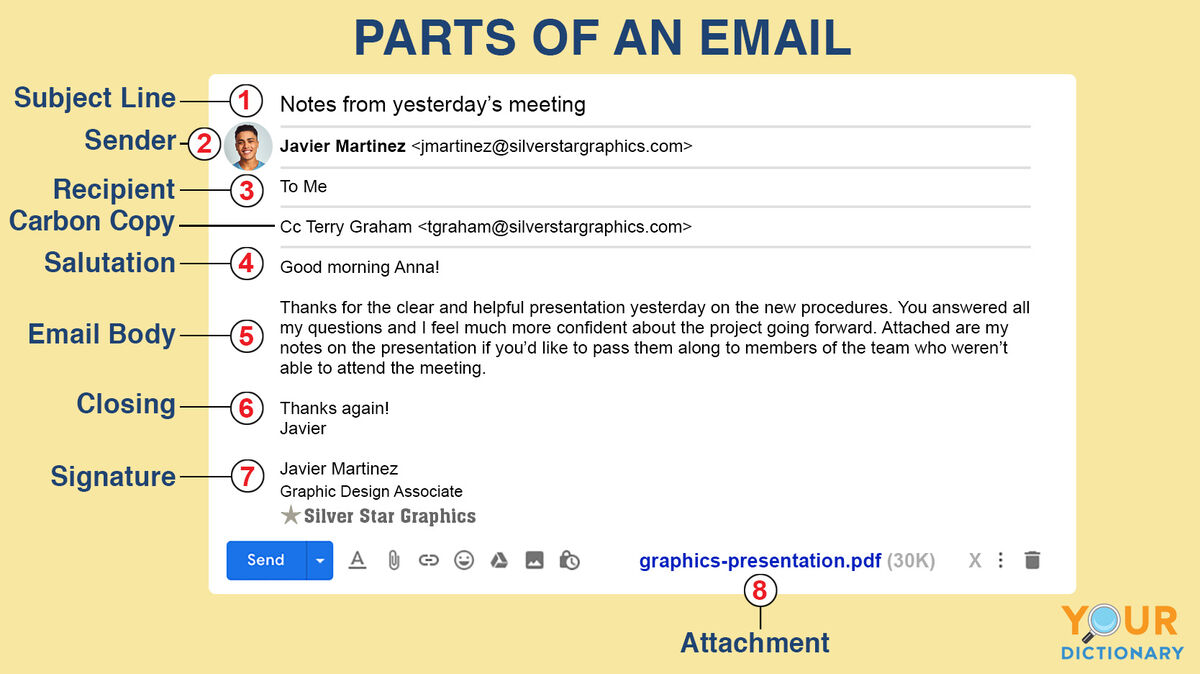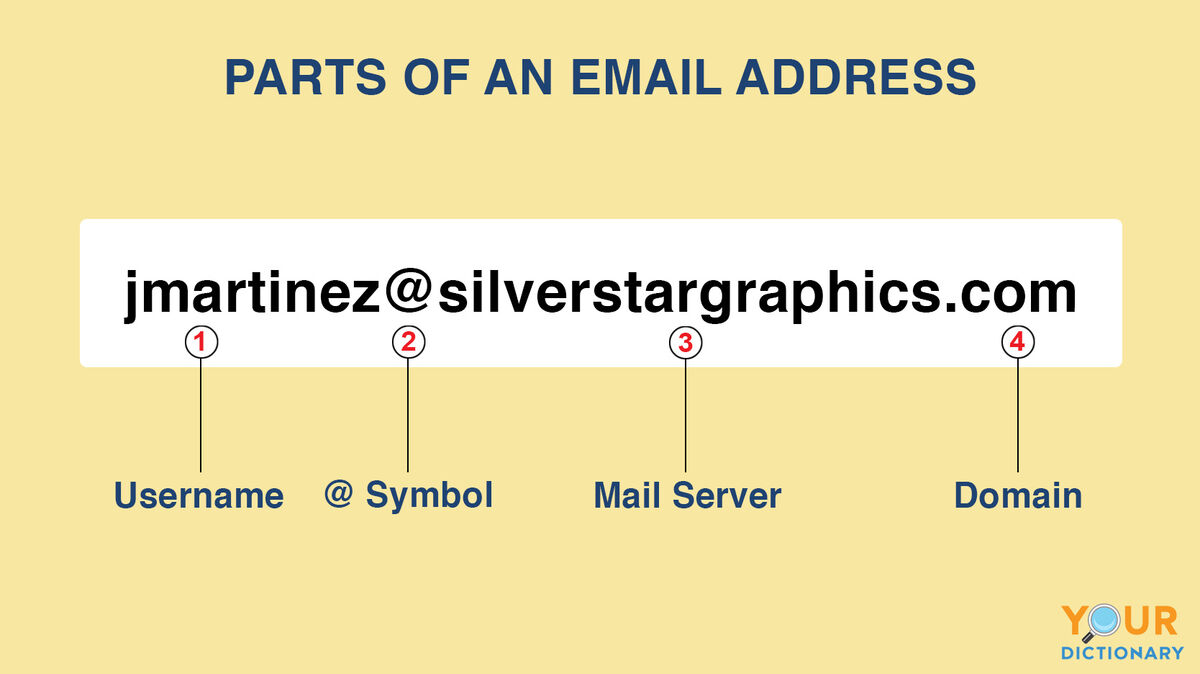
Email is one of the most popular ways to communicate in the 21st century. But do you know the different parts of an email message? What about the parts of an email address? Keep reading to learn about the basic parts of the messages and addresses you use every day.
Elements of an Email Message
When you think of an email message, you might think of the person you’re sending it to and what you’re going to say. However, an effective email has many more elements than these few. Double check these parts before sending your next email.
1. Subject Line
What is the email about? A good subject line summarizes the email and makes it sound important enough for the reader to open. Subject lines like “Hello” or “Meeting” are vague and make it difficult to know what the email will be about.
2. Sender
The email address of the person who sent the message appears here. Most email services display the person’s name before their email address to make it easier to identify them. When you press “reply,” your email will only go to this person.
3. Recipient
If you are receiving the message, your email address probably won’t appear here. Instead, you might see wording like “to me.” Message recipients might also include email addresses in these sections:
- Carbon Copy (CC) – people who receive the email for their own information, but who are not expected to reply. When you press “reply all,” all of these addresses receive your response.
- Blind Carbon Copy (BCC) – people who receive the email but are not listed as recipients. Senders use the BCC section if they don’t want recipients to know who else has received the email. They do not receive “reply all” responses.
4. Salutation
After the subject line, your email salutation, or greeting, is the next part that the recipient will see. It should match the tone you’re trying to set in the rest of your email. Don’t skip this part unless you are emailing back and forth quickly with someone in a virtual conversation.
5. Email Body
The email body contains the message of the email. Effective emails keep their email bodies short and add more extensive information to the attachments. For formal emails, such as messages to an employer or emails to your teacher, it’s best to avoid common email abbreviations.
6. Closing
If an email message is an electronic letter, it’s polite to end it with a closing. The closing you choose should match the tone of the rest of the email. Formal closings include “Sincerely” and “Thank you,” while more friendly messages can use “Talk to you soon!” or “See you later!”
7. Signature
Friendly letters might sign off with the sender’s name. But many business email accounts have signature sections that include the sender’s position, company and even company logo. These extended signatures are helpful when reaching out to clients or employees from other companies.
8. Attachments
An email might include an attachment that provides more information. The attachment could be a document for review, a picture to share or any other file type. Most email accounts have limits on the size of attachments, so the sender might add the file to the email body itself rather than attaching it.

Parts of an Email Address
Believe it or not, your email address provides a lot of information about you. It can reveal your name, interests, online savvy, and professionalism. Check your email address against these parts and see if it’s time to change your online persona to a new one.
1. Username
The username is the first part of an email address. Back in the early days of the Internet, people chose fun usernames like “musicfan156” or “blueeyes563” that described their hobbies or personalities. But now that email is so prominent in the professional world, usernames tend to include the person’s real name or initials. For example, Javier Martinez is more likely to be taken seriously as “jmartinez” than as “heavymetallover42628.”
2. @ Symbol
The @ symbol, which means “at,” separates the username from the rest of the email address. It means that the username belongs to the domain on the other side of the @ symbol. A server receiving the email uses the @ symbol to determine into which mail server it should sort the incoming message.
3. Mail Server
The name of the person’s mail server is on the right side of the @ symbol. It indicates the organization that hosts the server where their emails go. Many companies create their own domain names for their employees to use, while other domains are available for personal use (for example: Gmail, Yahoo, Outlook).
4. Top-Level Domain
The mail server and top-level domain (TLD) combine to make a user’s domain name. The top-level domain tells users what type of organization they are emailing. There are six common top-level domains:
- .com – company
- .edu – educational institution
- .gov – government institution
- .org – organization
- .net – network
- .mil – military

Writing Effective Emails That Get Results
Now that you know the basic parts of an email message and address, it’s time to work on what you want to say. Emails vary based on their context, just like friendly letters and business letters, but there are a few ways to make sure your email communicates your point effectively. Read five tips for writing effective emails to get the results you want from your electronic message. Or, if needed, learn how to write specific types of emails, such as out-of-office messages.